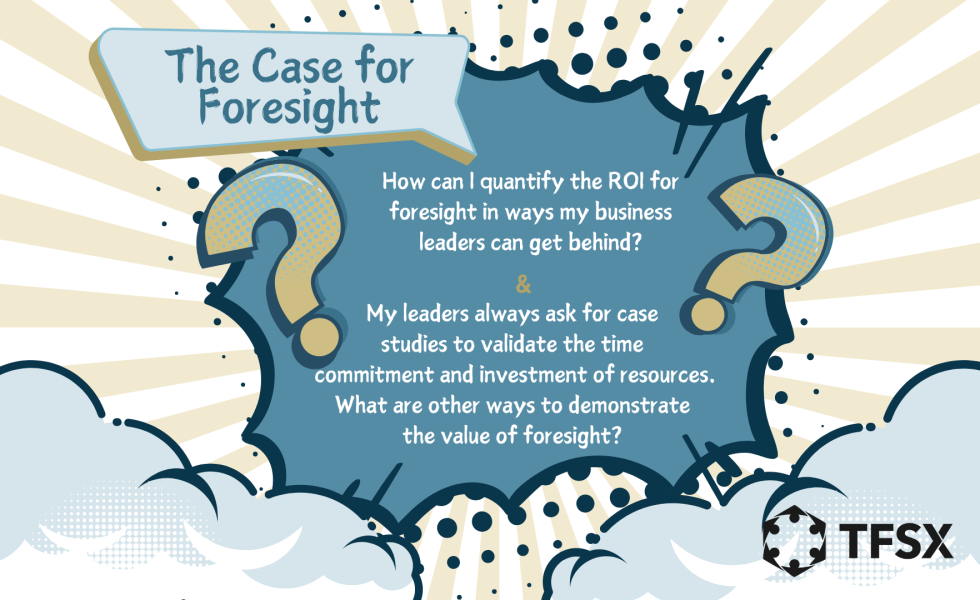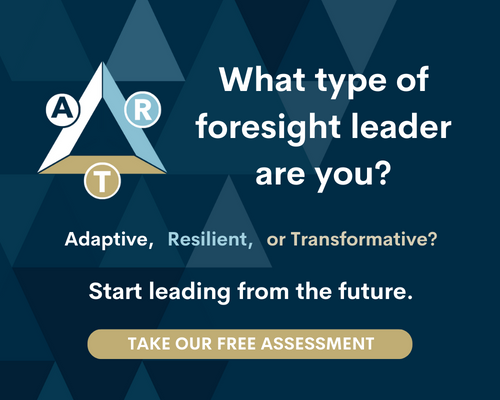There’s Got to be a Better Way to Quantify Foresight

If we had a dime for every time someone asked us for the ROI of foresight, well, let’s just say we wouldn’t need to entertain the question any longer. 😉
The inherent challenge of integrating foresight into established organizations and institutions is the problem of incompatibility. The measurement criteria in our current systems is essentially a different language than the solution (foresight) being proposed.

“The Great Horse Manure Crisis of 1894,” a historical urban crisis in London and New York, provides an excellent example of this disconnect. In 1894, The Times newspaper predicted that London’s streets would be buried under nine feet of manure in 50 years due to the difficulty of removing horse manure from the streets. Although urban planners debated the problem and conducted studies, no innovation proved useful. There was no contraption efficient enough to pick up the manure and no equipment that could be retrofitted to the horses themselves to effectively capture the cast off. In other words, no idea proposed had the “ROI” needed to solve the horse manure problem. Of course, the ultimate solution came in the form of an invention that eliminated the waste problem, well, at the “source.” The advent of motorized vehicles. The introduction of cars, buses, and electric trams replaced horses as the primary means of transportation, thereby avoiding the forecasted poop-tsunami.
Similarly, attempts to quantify the solutions to our current organizational dysfunctions will be met with frustration and failure.
A new vision requires a new measure.
The issue of building the case for foresight is so pervasive, we queried our global network of futurists about it during the Ask a Futurist crowd-sourced project. Many of you were curious about proving foresight’s worth with questions like:
- How can I quantify the ROI for foresight in ways my business leaders can get behind?
- My leaders always ask for case studies to validate the time commitment and investment of resources. What are other ways to demonstrate the value of foresight?
As a global community, you provided your insights and we synthesized that crowdsourced wisdom below:
- Highlight the Cost of Inaction: Framing the discussion in terms of the potential costs of not investing in foresight can be persuasive and involves highlighting the risks of being surprised by change, missing out on emerging trends, and failing to adapt to evolving market conditions.
- Showcase Tangible Benefits Through Pilots: Running small-scale pilot projects is a proven way of demonstrating the practical value of foresight. These pilots can serve as proof-of-concept initiatives, allowing leadership to experience firsthand how foresight can address specific challenges or opportunities. They can also generate quantifiable results and stakeholder testimonials that build credibility.
- Connect Foresight to Existing Strategic Objectives and Business Priorities: It’s crucial to align foresight initiatives with the organization’s current goals and priorities. Demonstrating how foresight contributes to achieving existing KPIs and supports strategic decision-making can make it more appealing to leadership focused on immediate outcomes.
- Cultivate a Culture of Foresight: Ultimately, we must embrace foresight as an ongoing practice, rather than a one-off project. This involves educating stakeholders, integrating foresight into existing workflows, and fostering a mindset that values long-term thinking and proactive adaptation. Building a foresight culture requires leadership buy-in and sustained effort to shift organizational norms and behaviors.
“I’ve always avoided being sucked into the quagmire of showing how ‘accurate’ foresight is in terms of ‘prediction’ – that way, madness lies….”
Dive Deeper with TFSX Curated Resources
Here are four resources to help you confidently explain foresight and its value:
- “It’s Time to Drop the F-Bomb on Culture” Article: We advocate for a “Foresight Culture” as the key to building a strong and successful organizational culture. This involves equipping leaders and employees with a “futures thinking mindset,” enabling them to actively engage in shaping their future and fostering innovation.
- Creating Foresight-Fueled Action Video: Nora Bateson dives deep into the role of complexity in shaping the future, sharing the concept of Warm Data as well as her thoughts on personal and collective agency, cooperating with emergence to co-create novelty, and “being in mutually learning relationships.”
- “Can You Teach Me Thermodynamics in 20 Minutes?” Article: Foresight should not be used to simply confirm existing biases or provide a superficial sense of comfort. It should challenge assumptions and push organizations to think critically about the future.
- Professional Foresight Certification: Natural Foresight® certification provides recognition for forward-thinking talent and ROI for companies.
Take the Next Step
Download the Ask A Futurist Ebook to explore our full resource hub, including all of the crowds’ wisdom and curated tools above and more. Equip yourself with the foresight knowledge you need to explain its value, overcome misconceptions, and start shaping better futures today.


